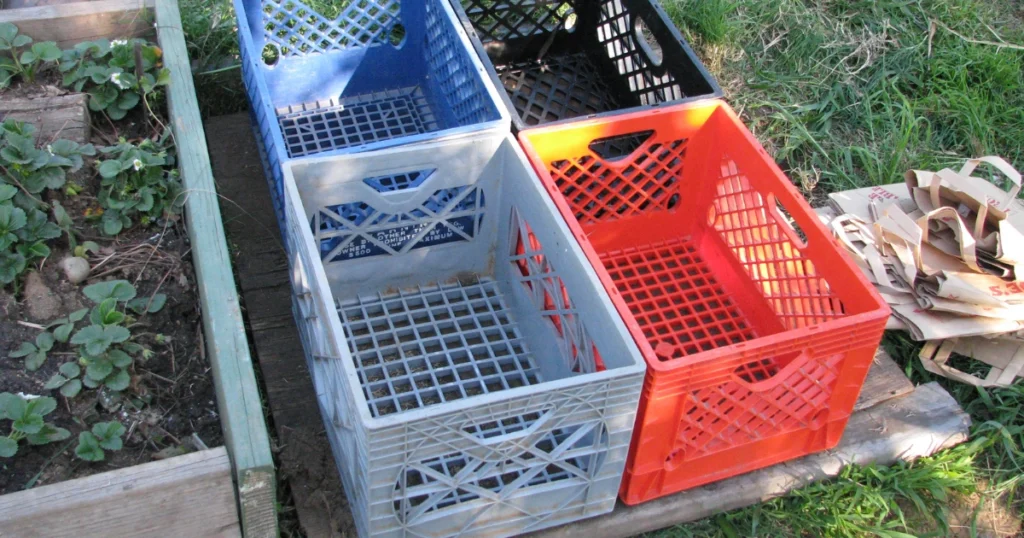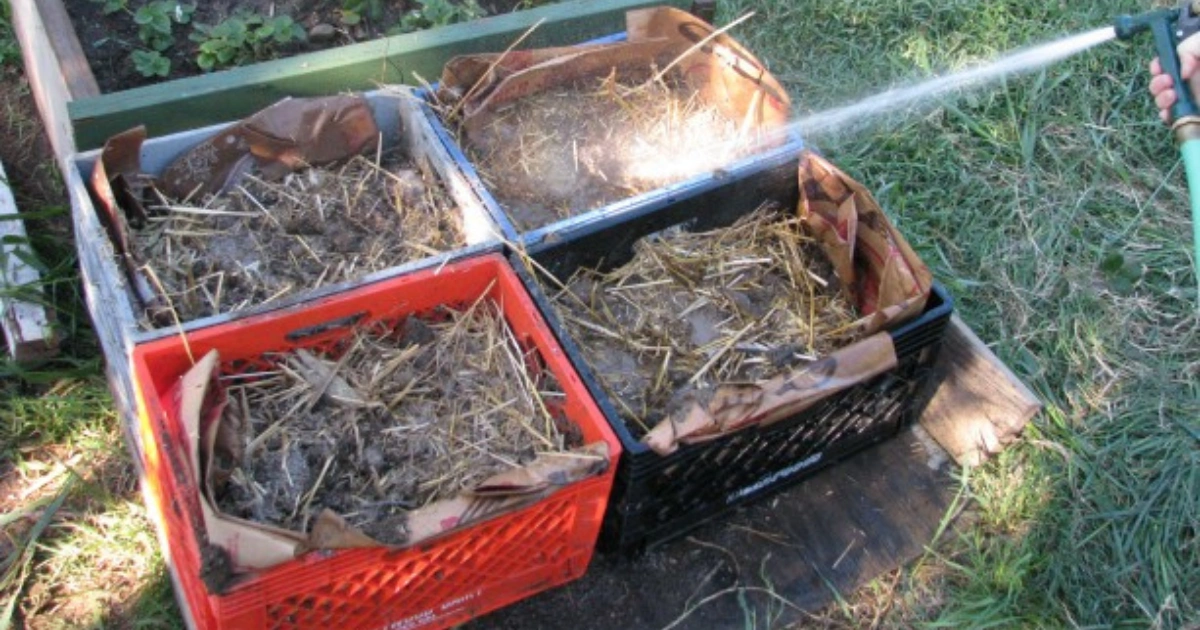Potatoes are one of the most rewarding crops you can grow at home, but traditional in-ground planting often requires a large garden bed and heavy digging at harvest time. If you’re working with a small yard, balcony, or patio—or simply want a cleaner and more efficient way to grow—stackable crates offer an innovative solution. This method lets you grow vertically, improve soil control, and enjoy an easier, mess-free harvest.

Why Choose Stackable Crates for Potatoes?
1. Space Efficiency
Vertical growing is ideal for compact gardens and urban spaces. By stacking crates, you can grow a high yield in a fraction of the footprint.
2. Effortless Harvesting
Instead of digging deep into the soil, simply lift the crates to reveal your potatoes—saving time and keeping them cleaner.
3. Superior Drainage
The ventilated structure of crates reduces the risk of waterlogging and rot, promoting healthier tuber growth.
4. Mobility
You can easily shift the crates to catch more sunlight, avoid heavy rain, or protect your crop from frost.
Step-by-Step Guide to Growing Potatoes in Stackable Crates
1. Prepare Your Crates
Choose sturdy, ventilated crates that can handle the weight of soil and plants.
Line the base of each crate with straw or a breathable fabric such as hessian to prevent soil loss while allowing good drainage.
2. Plant the Seed Potatoes
- Add a 4–6 inch layer of nutrient-rich compost or quality potting mix blended with straw for better aeration.
- Place seed potatoes on top, eyes facing upward, spacing them evenly.
- Cover with an additional 4 inches of the soil-straw mix.
3. Stack and Grow
When the plants reach about 6 inches in height, add another crate on top. Surround the stems with more soil and straw, leaving the upper leaves exposed.
Repeat this process, stacking crates higher as the plants grow. Each buried stem section encourages more tuber formation.
4. Water and Care
Keep the growing medium evenly moist but never soggy.
Position the crates in a sunny spot, as potatoes need at least 6–8 hours of sunlight daily.
5. Harvest with Ease
When the foliage turns yellow and dies back, your potatoes are ready. Simply unstack the crates one at a time and collect your crop directly from the straw—no digging required.
Extra Tips for Success
- Start with certified seed potatoes to avoid disease.
- Mulch the top layer to help retain moisture and regulate temperature.
- Rotate the crate location each season to reduce pest and disease build-up.
- After harvesting, reuse the crates for crops like carrots, sweet potatoes, or leafy greens.
Advantages Over Traditional Methods
Growing potatoes in stackable crates isn’t just space-saving—it’s also cleaner, faster, and more manageable for people with mobility issues. By reducing bending and digging, it offers a more accessible gardening approach while still delivering a satisfying harvest.
FAQs
Q1: How many seed potatoes should I plant per crate?
A: Depending on the crate size, 3–5 seed potatoes is ideal to allow enough space for tuber development.
Q2: Can I reuse the soil from my potato crates?
A: It’s best to refresh or replace the soil each season to prevent disease. You can repurpose old soil for non-root crops.
Q3: How high can I stack the crates?
A: Most gardeners find that 3–4 crates high is optimal for plant health and stability.
Q4: Do I need to fertilize during growth?
A: A balanced organic fertilizer or compost tea every few weeks can boost yields, especially in container growing.
Q5: Will this method work indoors?
A: Potatoes need ample light, so unless you have strong grow lights, outdoor placement is recommended.
Main keyword: grow potatoes in stackable crates
LSI/NLP keywords: vertical potato gardening, container potato growing, space-saving gardening, urban gardening potatoes, crate gardening method, potato harvest without digging, potato container method, vertical vegetable gardening
Internal link suggestions from secretsofthegreengarden.com:
- “Best Vegetables to Grow in Small Spaces”
- “How to Harvest Root Crops Without Damaging Them”
- “DIY Vertical Gardening Ideas for Urban Growers”
External link suggestions:


TONY20251130HOME. Những điểm ấn tượng chỉ có tại nhà cái 888slots
برای دوستانی که به دنبال یک راهکار مطمئن برای وریفای حساب در بروکرهای فارکس هستند، پیشنهاد میکنم خدمات شوپی را بررسی کنند. این مجموعه به صورت تخصصی، وریفای قانونی حساب های فارکس را با مدارکی ارائه میدهد که کاملاً معتبر بوده و به نام خودتان صادر میشود. این روش دائمی است و ریسک بلاک شدن حساب شما را به صفر میرساند. کیفیت و پشتیبانیشان واقعاً عالی است.
https://t.me/s/iGaming_live/4867